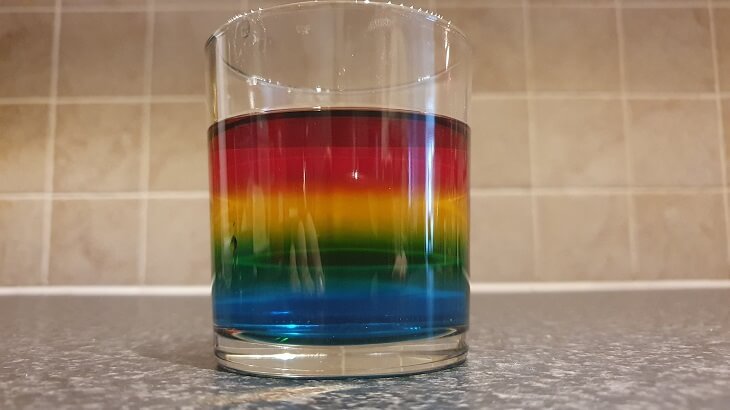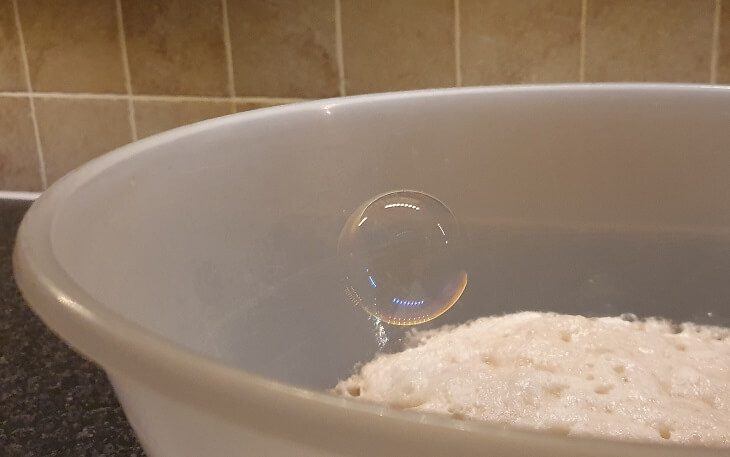To give the grandkids some fun activities for the Christmas holidays, the Royal Institution has outlined some easy science experiments linked to the natural world that children can try at home.
“With Christmas almost here, we wanted to create some experiments that families can do together at home,” says Dominique Sleet.
You’ll find most of the items needed for them at home, so they’re a great way to keep yourself and the grandkids entertained over the Christmas holidays.
The try-at-home experiments are:
1. Make your own volcano
You’ll need: A small pot, tray, plasticine/clay/paper-mâché (to make your volcano), vinegar, bicarbonate of soda and food colouring (red or orange works best).
How to do it: On the tray (this can get messy!), make a volcano shape around your pot using the plasticine/clay/papier-mâché, leaving a hole above your container so the volcano can erupt. Put a few drops of food colouring and the bicarbonate of soda into the pot in the middle of your volcano, then simply add a good squirt of vinegar and watch it erupt.
What’s going on? The acidic vinegar reacts with the alkali bicarbonate of soda, producing carbon dioxide. This creates lots of little bubbles which make the foamy mixture expand and erupt out of the volcano. Try experimenting with different amounts of vinegar and bicarbonate of soda and see how the reaction changes.
Read: Get the grandkids gardening
2. Rainbow in a jar

You’ll need: A large clear glass or jar, three smaller cups or glasses, measuring jug, water, 45g salt, red, yellow and blue food colouring, scales or a measuring teaspoon, a spoon.
How to do it: Pour 100ml of water into each of the three cups and add a few drops of red food colouring to one cup, yellow food colouring to another, and blue food colouring to the last. Put 15g (3 teaspoons) of salt in the yellow water, 30g (6 teaspoons) in the blue water, and no salt in the red water. Stir the salt solutions until you can’t see any crystals (warm water helps the salt dissolve faster).
Pour the blue liquid into the large glass jar until it’s a third of the way up. Next, pour the yellow water in very carefully from a jug, resting a teaspoon just on top of the blue water in the jar, dipped side up. The more carefully you pour, the better the distinction between the coloured layers. Gently pour the yellow water so it lands on the teaspoon and then gently flows out of the spoon on top of the blue layer. If you look from the side you’ll see the yellow water is mixing with the blue to create a green layer. Don’t worry, keep gently pouring the yellow water until you end up with a layer of yellow at the top.
Rinse out the jug and repeat what you did with the yellow water with the red water. “Then stand back and admire your rainbow!” says Ms Sleet.

What’s going on? “By adding salt to the water, we’re changing the density to make the water heavier,” explains Ms Sleet. “So when we layer the different coloured liquids, the liquids we added lots of salt to will be very dense and sink to the bottom, while the liquids with less salt float on top. There’s a bit of mixing between the layers, which helps to give us this great rainbow effect.”
Read: Fun things to do with the grandkids
3. Floating bubbles

You’ll need: A large bowl, bicarbonate of soda, vinegar, bubble mix and a bubble wand.
How to do it: Pour a thick layer of bicarbonate of soda all over the bottom of the bowl, and then pour plenty of vinegar over the bicarbonate, but resist mixing it, and try not to move the bowl as the gas will easily escape. Watch the mixture fizz for a few seconds, then gently blow bubbles over the bowl so they fall into it. “You should see the bubbles float above the surface of your mixture,” says Ms Sleet, “although this might take a bit of practise!”
What’s going on? The reaction between the acidic vinegar and the alkaline bicarbonate of soda produces invisible carbon dioxide gas. “We can see where it is because the bubbles float on top of it,” explains Ms Sleet. “This works because carbon dioxide is denser than air, so it sinks and stays in the bowl. Because the bubbles are filled with normal air they’re less dense than the carbon dioxide and can float on the top, just like a boat floats because it’s less dense than water.”
Read: A precious gift for the grandkids
Do you have any more fun things planned for the grandkids over the holidays? Please share them with other members in the comments section below.
– With PA
If you enjoy our content, don’t keep it to yourself. Share our free eNews with your friends and encourage them to sign up.

